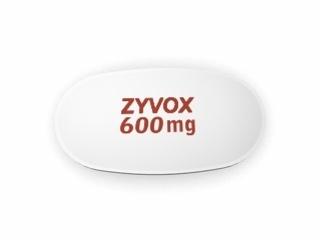Erythromycin
Generic name: Erythromycin.
Dosage: Erythromycin 250mg, 500mg.
Category: Antibiotics.
Buy Erythromycin online without prescription: Erythromycin Online Pharmacy
Erythromycin – recommendations for use and dosage
Erythromycin is in a group of drugs called macrolide antibiotics. Erythromycin is used to treat many different types of infections caused by bacteria. It is also used to prevent bacterial endocarditis and attacks of rheumatic fever.
Dosage and direction
Take erythromycin exactly as it was prescribed for you. Take each dose with a full glass (8 ounces) of water. Erythromycin can be taken on an empty stomach or with food or milk. Do not crush, chew, break, or open an enteric-coated or delayed-release pill. Swallow the pill whole.
Precautions
Antibiotic medicines can cause diarrhea, which may be a sign of a new infection. If you have diarrhea that is watery or has blood in it, call your doctor. Do not use any medicine to stop the diarrhea unless your doctor has told you to.
Contraindications
Do not use this medication if you are allergic to erythromycin, or if you are also taking cisapride (Propulsid) or pimozide (Orap). If you have liver disease or myasthenia gravis, you may need a dose adjustment or special tests to safely take erythromycin. This medication is not expected to be harmful to an unborn baby. Tell your doctor if you are pregnant or plan to become pregnant during treatment. Erythromycin can pass into breast milk and may harm a nursing baby. Do not use this medication without telling your doctor if you are breast-feeding a baby.
Possible side effects
Get emergency medical help if you have any of these signs of an allergic reaction to erythromycin: hives; difficulty breathing; swelling of your face, lips, tongue, or throat. Call your doctor at once if you have any of these serious side effects:
- chest pain, uneven heartbeats, feeling light-headed or fainting;
- nausea, stomach pain, low fever, lost appetite, dark urine, clay-colored stools, jaundice (yellowing of the skin or eyes); or diarrhea that is watery or bloody.
Less serious erythromycin side effects may include:
- mild nausea, vomiting, diarrhea, or stomach pain;
- dizziness, headache, feeling tired;
- vaginal itching or discharge;
- mild itching or skin rash.
Drug interaction
Many drugs can interact with erythromycin. Tell your doctor about all the prescription and over-the-counter medications you use. This includes vitamins, minerals, herbal products, and drugs prescribed by other doctors. Do not start using a new medication without telling your doctor.
Missed dose
Take the missed dose as soon as you remember. If it is almost time for your next dose, skip the missed dose and take the medicine at the next regularly scheduled time. Do not take extra medicine to make up the missed dose.
Comparison of Erythromycin with other groups of antibiotics
- Penicillins (e.g., amoxicillin, ampicillin):
- Spectrum of activity: Penicillins are typically effective against gram-positive bacteria and some gram-negative bacteria.
- Application: They are often used to treat upper respiratory tract infections, urinary tract infections, skin, and soft tissue infections.
- Side effects: Major side effects include allergic reactions such as hives and anaphylactic shock.
- Cephalosporins (e.g., ceftriaxone, cephalexin):
- Spectrum of activity: Cephalosporins have a broad spectrum of activity and are effective against both gram-positive and gram-negative bacteria.
- Application: They are commonly used to treat respiratory tract infections, urinary tract infections, skin, and soft tissue infections.
- Side effects: Possible side effects include allergic reactions, diarrhea, and less commonly, blood abnormalities.
- Tetracyclines (e.g., doxycycline, tetracycline):
- Spectrum of activity: Tetracyclines are generally effective against a variety of bacteria, including gram-positive, gram-negative, and atypical organisms.
- Application: They are used to treat skin infections, acne, respiratory infections, urinary tract infections, and others.
- Side effects: Side effects may include diarrhea, nausea, vomiting, photosensitivity, among others.
- Fluoroquinolones (e.g., ciprofloxacin, levofloxacin):
- Spectrum of activity: Fluoroquinolones are often effective against both gram-positive and gram-negative bacteria, including many atypical organisms.
- Application: They are used to treat urinary tract infections, respiratory tract infections, skin infections, and others.
- Side effects: Side effects may include diarrhea, nausea, vomiting, arrhythmias, and less commonly tendonitis and neurological effects.
Each of these antibiotic groups has its own characteristics, and the choice of a specific drug depends on the type of infection, the sensitivity of the microorganisms to antibiotics, the patient’s condition, and other factors considered by the physician.






